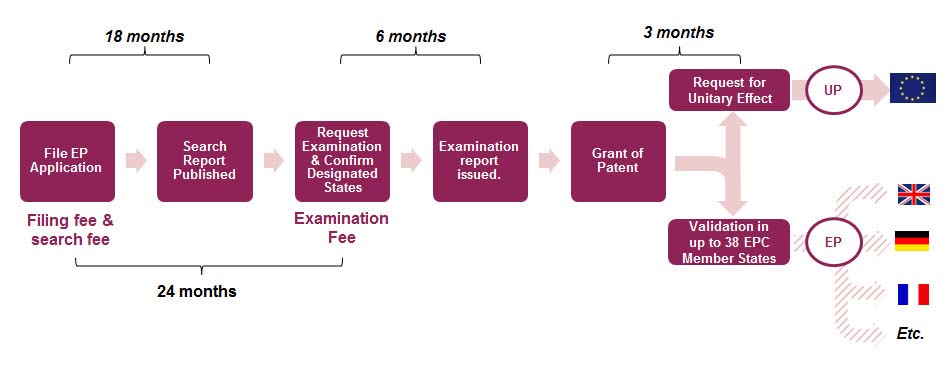Nick Cunningham
Of Counsel
Article
4
The below article is outdated and does not reflect new developments since its publication. You will find up-to-date information about the Unified Patent Court and the Unitary Patent at gowlingwlg.com/upc
The Unitary Patent (UP) is a new patent right which covers most of Europe at a fraction of the cost of an equivalent European Patent (EP). However, unlike an EP which is a bundle of national rights, the Unitary Patent is a single unitary right meaning it cannot be 'pruned' geographically on renewal and it may be revoked as a whole in a single action. We explain the key points of the Unitary Patent below.
The Unitary Patent (UP) (also known as a 'European patent with unitary effect'), is a patent which has been granted by the European Patent Organisation in the same way as an existing EP, but for which the patent owner has requested unitary effect across the participating member states. The unitary effect across the participating member states of the EU is created by EU Reg. 1257/2012, and to this extent the patent can be considered an 'EU' right (compared to EPs, which have no basis in EU law).
The application process for a UP is the same as for an EP up until the grant of the patent. Provided all participating states have been designated in the application, the patent owner then has 3 months to request unitary effect and file the necessary translations (if in English to another official language of the EU, and if in French or German to English). This has the effect of turning its bundle of national rights into a single 'unitary' right covering the EU member states which have ratified the Agreement on a Unified Patent Court at the date on which unitary effect if requested. A UP will therefore cover up to 25 of the EU 28 member states (excluding Spain, Poland and Croatia).
A UP will not cover EU states which are not participating in the Unified Patent Court (UPC) or have failed to ratify the agreement (such as Spain, Poland and Croatia), nor other EPC contracting states which are not members of the EU (e.g. Turkey). If an applicant requires patent protection in those countries it will need to validate its EP in those countries. EP validations may be obtained from the same patent application.

The renewal fees for a UP are €35,555 over the 20 year life of the patent. This is significantly less than the cost of validating and renewing an EP in each of the 26 participating member states. Nevertheless, it is comparatively rare for companies to validate an EP in all member states and, unlike an EP, a UP cannot be 'pruned' to reduce renewal fees.
A UP offers patent owners an additional option for protecting their inventions in the EU. It will not always be the right option for every patent owner, but should at least be considered as part of a long term patent strategy. Patent owners should discuss the most effective strategy for their business with their advisors.
For further information on the UPC or advice and guidance as to how to prepare for it coming into force in 2017, please speak to Nick Cunningham, Michael Carter or another member of our patent team.
NOT LEGAL ADVICE. Information made available on this website in any form is for information purposes only. It is not, and should not be taken as, legal advice. You should not rely on, or take or fail to take any action based upon this information. Never disregard professional legal advice or delay in seeking legal advice because of something you have read on this website. Gowling WLG professionals will be pleased to discuss resolutions to specific legal concerns you may have.